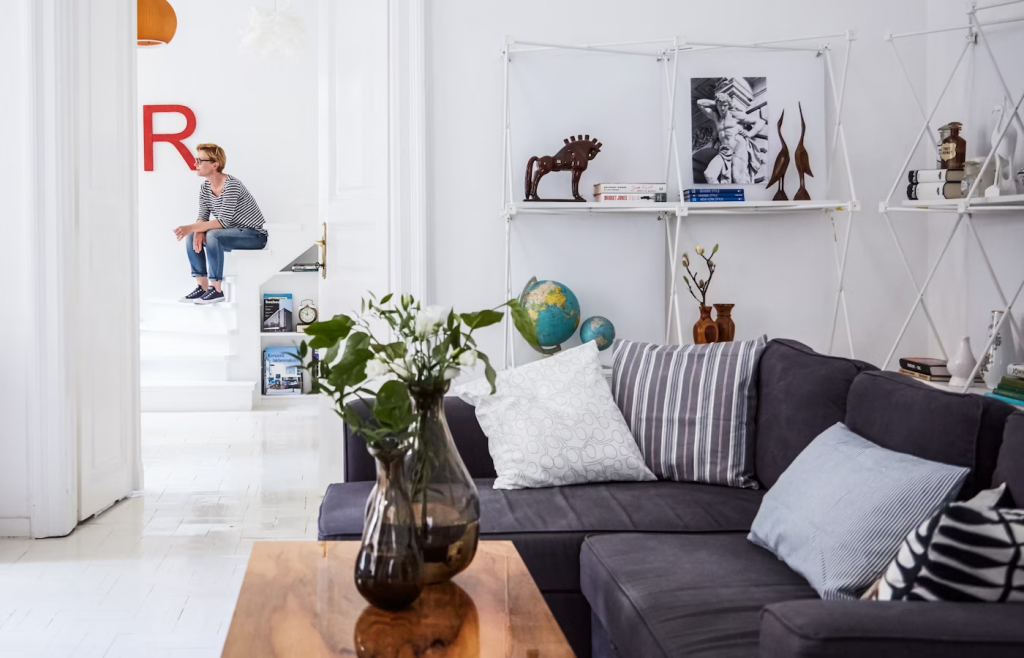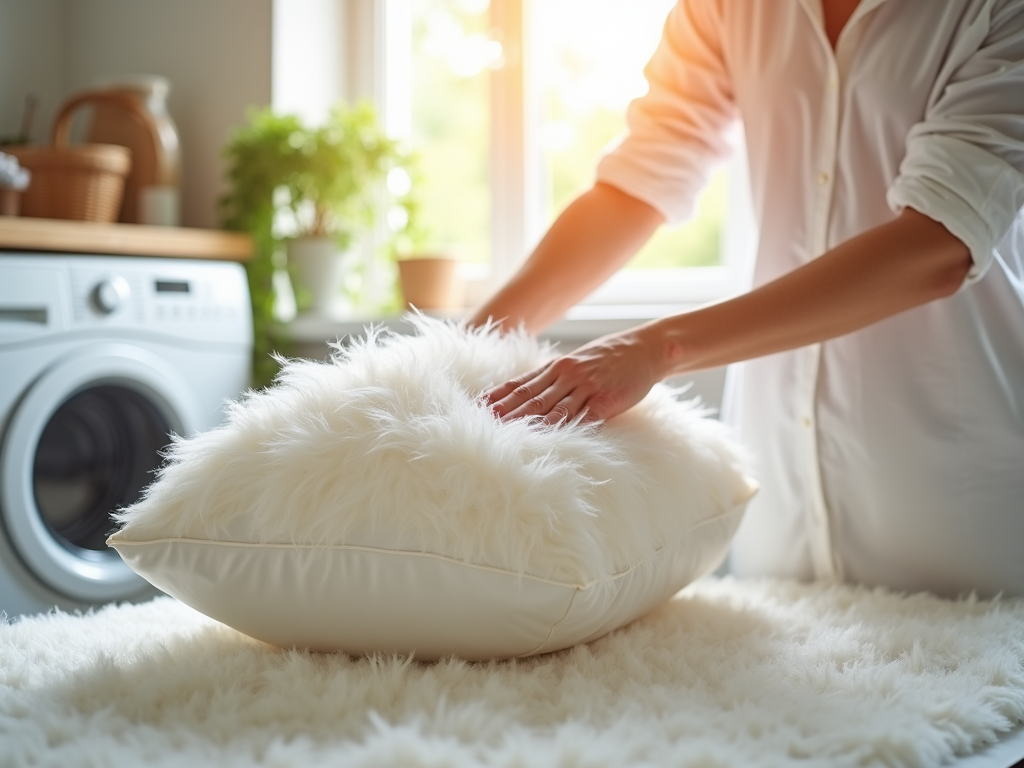Living in small spaces can feel confining and restrictive, but with a few clever tricks, you can make even the smallest rooms look and feel much more open and airy. The question is, how do you transform a compact area into one that feels substantially larger? This article discusses some tried and true methods to create the illusion of space. From the colors on your walls to the placement of mirrors, these tips are designed to make your rooms look bigger and your smallest spaces feel much more expansive.
Understanding the Illusion of Space
The trick to making rooms seem bigger is all about manipulating visual perception. Certain design techniques can trick the eye into seeing more space than there actually is. This is achieved through strategic use of color, lighting, and furniture placement, which can alter the way a room appears. Even smaller living areas can seem larger with the right approach. Here is a closer look at how you can maximize the visual space in your home.

The Power of Color
One of the simplest tricks in the book for making rooms feel larger is using lighter colors on the walls. Light and bright walls are more reflective, making a space feel open and airy, which maximizes the effect of natural light. In contrast, darker colors absorb light, causing rooms to look smaller. A palette of off-whites, blues, and greens is a great place to start when creating a more spacious feeling.
Light Colors and Their Expanding Effects
Using lighter colors does not just apply to your walls. Ceilings painted in a lighter shade can also help the room to feel taller. Other elements like trim and molding painted in lighter colors can make the walls appear farther back, expanding your room’s visual space. Here’s a pro tip: use paint with a satin finish, as it reflects light better than matte finishes, helping to create an even more spacious effect.
Lighting: Your Space-Enhancing Ally
Maximizing natural light in a room will also make it feel larger. Keeping windows unobstructed from heavy curtains or blinds allows light to pour in and visually opens up the space. When considering artificial light, opt for a mix of overhead and ambient lighting to eliminate shadows that can close in a space. Accent lighting can also be used to draw the eye to different areas of the room, thereby expanding the perception of space.
Strategic Lighting Placement for Maximum Impact
The strategic placement of lighting fixtures can impact the way a space feels. For an extra touch of elegance that also helps create space, consider hanging a statement light fixture in the center of the room. This draws the eye upward and gives the illusion of height. Also, using directed lights, such as track lights or under-cabinet lighting in the kitchen, can help to create focused areas and lead the eye through the room, making it feel more expansive.
Clever Furniture Choices and Placement
Choosing furniture pieces that are proportionate to the size of your room is key. Overcrowding a room with too much or too large furniture will make any space, especially tiny living areas, feel much more cramped. Opt for sofas with visible legs to enhance the sense of space and choose pieces such as armchairs that have a more open design. One large piece of furniture works better than several smaller pieces that can make a space feel cluttered.
Multi-functional Pieces and Space Economy
Furniture that serves more than one purpose is especially useful in smaller spaces. Pieces such as sofa beds or ottomans with storage can eliminate the need for extra pieces of furniture. Opting to use a bookcase as a room divider is another way to maximize space while still defining different areas within a room.

Arrangement Techniques to Fool the Eye
How you arrange your furniture can also make a room appear much bigger. Here is a straightforward approach:
- Push furniture away from walkways as keeping them clear creates a sense of flow.
- Place the largest piece of furniture against the longest wall to maximize open space.
- Ensure there is plenty of negative space, i.e., small empty areas that allow your eyes to pause. This helps a room to feel not as stuffed.
Smart Use of Decor and Accessories
Including mirrors is one of the oldest design tricks in the book to make rooms look much larger. Placing mirrors across from windows reflects natural light and outdoors views, virtually expanding the boundaries of your space.
Artwork and Accessory Scale to Enhance Spaciousness
The scale of decor items in a room is crucial in maintaining the feeling of space. One larger painting may enhance the room’s openness more effectively than a group of small pictures, which can make it feel cluttered. When selecting accessories, consider those with a clear purpose and keep them minimal to avoid adding visual clutter.
Organizational Hacks to Keep Clutter at Bay
Storage is one of the biggest challenges in small rooms, but a variety of creative solutions can help. Hidden storage, such as beds with built-in drawers or coffee tables with compartments, keep items out of sight and free up floor space. Remember, the less clutter, the bigger your space will feel.
The Magic of Minimalism in Maximizing Space
Adopting a minimalist approach to decor and furniture can help make even the smallest living room feel larger. By only having essential pieces and maintaining a decluttered space, you emphasize the areas of openness and function in your room.
The Role of Flooring and Ceilings
Flooring that continues from room to room creates a cohesive look that can make your entire home seem larger. Whether it is hardwood, tile, or carpet, using the same materials throughout can blur the boundaries between spaces, creating a feeling of endlessness.
Ceiling Treatments That Elevate Your Space
Ceilings appear higher when they include designs that draw the eye upwards. Crown molding, vertical stripes, or other vertical elements can make ceilings seem higher and your space more grandiose. Conversely, making sure your curtains hang from as high as possible can also give the illusion of taller ceilings.

Conclusion
By applying these design principles, you can create a home that feels much larger and more welcoming. Lighter colors, strategic lighting, thoughtfully chosen furniture, and smart storage are just a few ways to achieve the spacious home you’ve always wanted. The final touch is maintaining your space to prevent clutter from creeping back in, keeping your rooms feeling permanently open and serene.
FAQs
| Question | Answer |
|---|---|
| How important is color choice in creating the illusion of a larger space? | Color choice is crucial. Light and neutral colors can make a room feel airier and more open, reflecting more light, which enhances the perception of space. |
| Can furniture actually help make a room look bigger? | Absolutely. Choosing furniture with sleek lines and smaller scale pieces can free up room. Furthermore, furniture that serves multiple purposes can eliminate clutter and make space feel bigger. |
| Are mirrors really effective in making spaces look larger? | Yes, mirrors reflect both natural and artificial light, making a room look brighter and larger as they bounce light deep into the room. |
| How can flooring impact the perceived size of a room? | Using the same type of flooring across adjacent spaces can create a seamless look that visually expands the area. Also, certain patterns and directions of floorboards can make a room look longer or wider. |
| Is minimalism the only organizational style that makes a space look bigger? | Minimalism isn’t the only way, but it’s a very effective one. Keeping a tidy, decluttered room with proper hidden storage will naturally make the space feel larger. Other organizational styles can also have a similar effect if they promote order and reduce clutter. |



